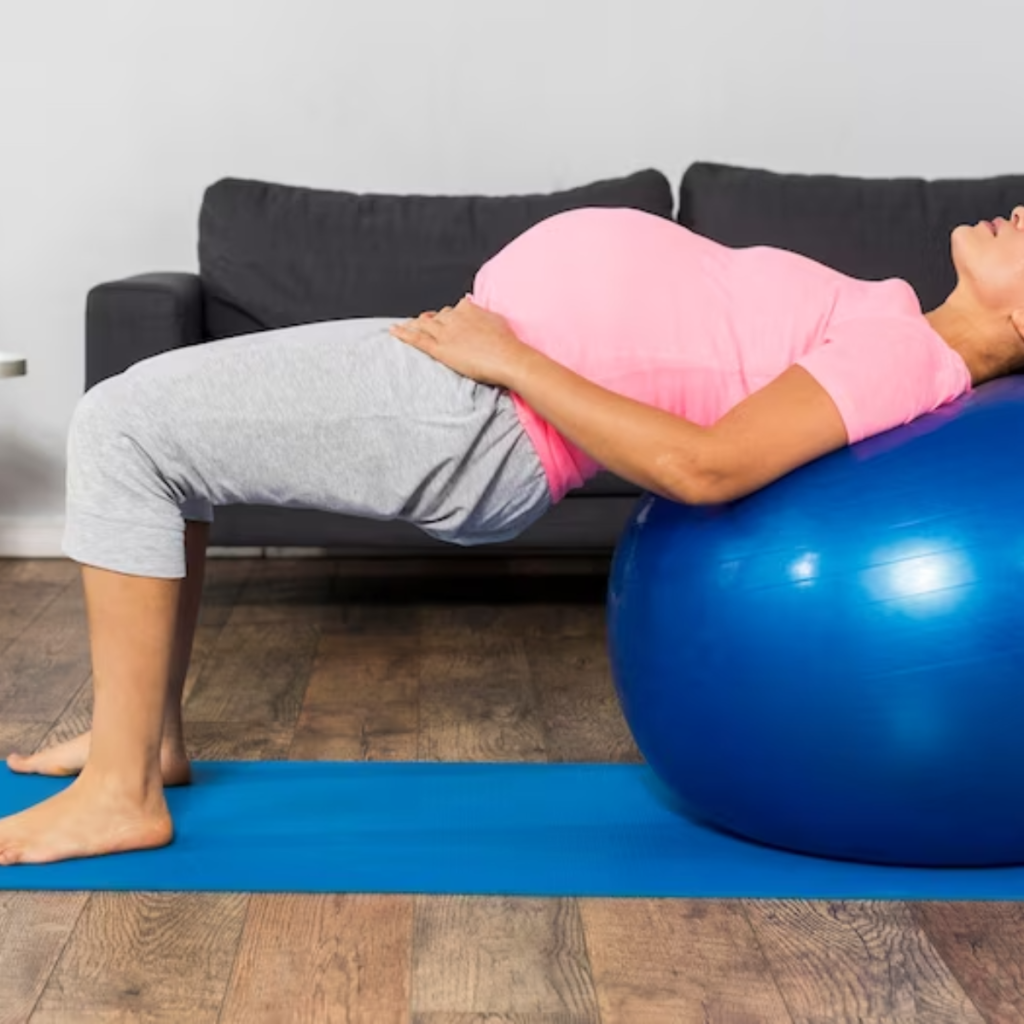Discover the potential benefits of pelvic floor exercises in relieving postpartum back pain.
Can Pelvic Floor Exercises Help Relieve Postpartum Back Pain?
Welcome to the wonderful world of postpartum recovery! Imagine the excitement of meeting your little bundle of joy for the first time, mixed with the exhaustion of sleepless nights and the challenges of getting your body back in shape. One common issue many new moms face is postpartum back pain. But fear not! In this article, we’ll explore the magical powers of pelvic floor exercises and how they can help mommy warriors like you find relief.

Understanding Postpartum Back Pain
Before we dive into the fascinating universe of pelvic floor exercises, let’s first understand what postpartum back pain is all about. You’ve just given birth, and your body has been through an incredible journey. While your heart may be overflowing with love, it’s normal to experience some discomfort in your back during this recovery phase.
But fret not, dear warrior! This back pain is typically caused by a combination of factors, including changes in your posture, weakened core muscles, and stress on your spine from carrying and lifting your little cherub.
Let’s explore these factors in more detail to gain a deeper understanding of what your body is going through.
Causes of Postpartum Back Pain
So, what exactly triggers this postpartum backache? Here are a few culprits:
- Your spine may have taken on a curved shape during pregnancy, and it’s readjusting itself.
- During pregnancy, the weight of your growing baby can cause your spine to shift and adapt to accommodate the changes in your body. After giving birth, your spine gradually returns to its pre-pregnancy position, which can cause temporary discomfort and back pain.
- Hormonal changes may have loosened the ligaments and joints in your back.
- During pregnancy, your body releases hormones that help relax the ligaments and joints in your pelvis to prepare for childbirth. However, these hormonal changes can also affect the ligaments and joints in your back, making them more susceptible to strain and discomfort.
- You may have strained or even torn some muscles during labor and delivery. Ouch!
- The process of labor and delivery can put a significant amount of stress on your body, including your back muscles. In some cases, the muscles in your back may become strained or even torn during childbirth, leading to postpartum back pain.
By understanding these causes, you can have a clearer picture of why you may be experiencing back pain after giving birth.
Symptoms and Duration of Postpartum Back Pain
Postpartum back pain can come in various forms, ranging from a dull ache to sharp, shooting sensations. It may manifest in your lower back, hips, or even radiate down to your legs. As for the duration, well, every superhero mom’s journey is unique, but thankfully, most cases of postpartum back pain tend to resolve within a few weeks or months.
During this recovery period, it’s essential to listen to your body and give it the care and attention it needs. Engaging in gentle exercises, practicing good posture, and seeking professional guidance can all contribute to alleviating postpartum back pain and promoting a healthy recovery.
Remember, dear warrior, you’ve just accomplished something incredible by bringing a new life into the world. Embrace the journey of motherhood, and know that your body will continue to heal and adapt as you embark on this beautiful chapter of your life.
The Importance of the Pelvic Floor
Shift your focus to the magnificent powerhouse that lies beneath your bump: the pelvic floor! This group of muscles plays a pivotal role in maintaining core strength and stability, bladder and bowel control, and, you guessed it, postpartum recovery.
But let’s dive deeper into the fascinating world of the pelvic floor and explore its anatomy, functions, and the incredible benefits it offers.
Anatomy of the Pelvic Floor
Allow us to take you on a quick field trip to your body’s wonderland. Your pelvic floor muscles are like a hammock, spanning from the front pubic bone to the tailbone. They also run between the sitting bones – we’re talking about those two bony points you feel when you’re sitting on a hard surface, like a wooden chair.
These muscles consist of layers, each with its own unique function. The superficial layer provides support and stability, while the deep layer works to control bladder and bowel movements. Together, they create a harmonious network of strength and flexibility.
Now, imagine this superheroic hammock collaborating with your core muscles, spine, and pelvis for ultimate strength and support. Talk about teamwork!
Role of the Pelvic Floor in Postpartum Recovery
As you journey through the magnificent realm of motherhood, your pelvic floor muscles have undergone quite a lot. They’ve played a crucial role in supporting your growing baby, and now it’s time to show them some love and attention.
During pregnancy, the weight of the baby puts increased pressure on the pelvic floor, causing it to stretch and sometimes weaken. This can lead to issues such as urinary incontinence, pelvic organ prolapse, and even back pain.
But fear not! Strengthening your pelvic floor can help alleviate these postpartum discomforts. By engaging in targeted exercises, such as Kegels, you can regain control over your bladder and bowel movements, reduce the risk of pelvic organ prolapse, and even improve postpartum back pain.
But the benefits don’t stop there! A strong pelvic floor also enhances sexual function, increases blood flow to the pelvic area, and promotes a faster postpartum recovery overall.
So, don’t underestimate the power of your pelvic floor. It’s a true unsung hero that deserves all the attention and care it can get. Incorporate pelvic floor exercises into your daily routine and embrace the incredible transformation happening within your body.
Pelvic Floor Exercises for Postpartum Back Pain
Now, let’s unveil the secret spells of postpartum recovery: pelvic floor exercises! These exercises are not only simple but can easily be incorporated into your daily routine, even while holding your little one in your arms.
After giving birth, your body goes through numerous changes, and one area that often gets neglected is the pelvic floor. However, taking care of your pelvic floor is crucial for your overall well-being. So, let’s dive into the world of pelvic floor exercises and discover their amazing benefits!
Benefits of Pelvic Floor Exercises
Before we jump into the actual exercises, let’s celebrate the fabulous benefits of giving your pelvic floor some TLC:
- Enhanced core strength and stability – who doesn’t want abs of steel? When you strengthen your pelvic floor, you also strengthen the deep core muscles that support your spine and pelvis, resulting in improved overall stability.
- Improved bladder and bowel control – because we all deserve the freedom to sneeze without worrying. Pelvic floor exercises help to strengthen the muscles that control urination and bowel movements, reducing the risk of leaks and incontinence.
- Reduced postpartum back pain – goodbye, aching back, hello superhero mom! Your pelvic floor muscles play a crucial role in supporting your spine and pelvis. By strengthening these muscles, you can alleviate postpartum back pain and improve your overall posture.
Now that we know the incredible benefits of pelvic floor exercises, let’s explore some recommended exercises that will make you feel like the mighty warrior you are:
Recommended Pelvic Floor Exercises
- Pelvic floor contractions, also known as Kegels, are the bread and butter of pelvic floor workouts. Squeeze those muscles like you’re stopping the urge to pee, hold for a few seconds, and release. Repeat this magical cycle several times throughout the day. These exercises can be done discreetly anywhere, whether you’re sitting at your desk or waiting in line at the grocery store.
- Bridge poses are a fantastic way to strengthen your core and glutes while engaging your pelvic floor. Simply lie on your back, bend your knees, and lift your hips off the ground. Feel the burn and enjoy the superhero vibes. As you lift your hips, focus on engaging your pelvic floor muscles to maximize the benefits of this exercise.
- Yoga is not only soothing for the soul but also fantastic for your pelvic floor. As you move through various asanas, focus on activating your pelvic floor muscles, building strength, and finding inner zen. Poses like the Warrior II, Tree Pose, and Child’s Pose can help you connect with your pelvic floor and promote its overall health and well-being.
Remember, consistency is key when it comes to pelvic floor exercises. Aim to incorporate these exercises into your daily routine, gradually increasing the intensity and duration as your strength improves. And don’t forget to listen to your body – if something doesn’t feel right, consult with a healthcare professional.
So, mama, embrace the power of pelvic floor exercises and let your inner superhero shine!
Safety Measures and Precautions
With great power comes great responsibility, and the same applies to pelvic floor exercises. Let’s dive into a few safety measures and precautions to ensure you’re enjoying a seamless journey to postpartum recovery.
When to Start Pelvic Floor Exercises After Delivery
Now, listen up, superhero mom! It’s important to give your body some time to heal after delivery before diving into pelvic floor exercises. Most healthcare professionals recommend waiting until your six-week postpartum checkup to get the green light. Trust us, your body will thank you later.
Signs You’re Overdoing Pelvic Floor Exercises
While pelvic floor exercises are magical, it’s essential to listen to your body and avoid overdoing it. Here are a few signs that you may be pushing it too hard:
- Increased pain or discomfort
- Difficulty emptying your bladder or bowels
- Leaking urine or stool during exercises
If any of these red flags appear, take a step back, rest, and consult with your healthcare provider. Remember, we’re here to support your superhero journey every step of the way!
Consulting a Healthcare Professional
While this article has been your trusted guide through the galaxy of postpartum back pain and pelvic floor exercises, it’s always wise to consult with a healthcare professional for personalized advice.

Role of Physical Therapists in Postpartum Recovery
Physical therapists are the superheroes of postpartum recovery. They can assess your unique situation, provide tailored exercises, and guide you toward a pain-free and empowered recovery journey. Don’t hesitate to reach out to them for their expert wisdom.
When to Seek Medical Help for Postpartum Back Pain
If your postpartum back pain is persistent, interfering with your daily activities, or accompanied by alarming symptoms such as fever or numbness, it’s time to activate your superhero hotline and seek medical help. Your medical team is there to ensure you soar through your postpartum journey without any unnecessary bumps.
So, dear superhero mom, don’t let postpartum back pain dampen your spirits. The power of pelvic floor exercises is within your grasp – embrace it, strengthen it, and conquer the ever-amazing rollercoaster of motherhood!



